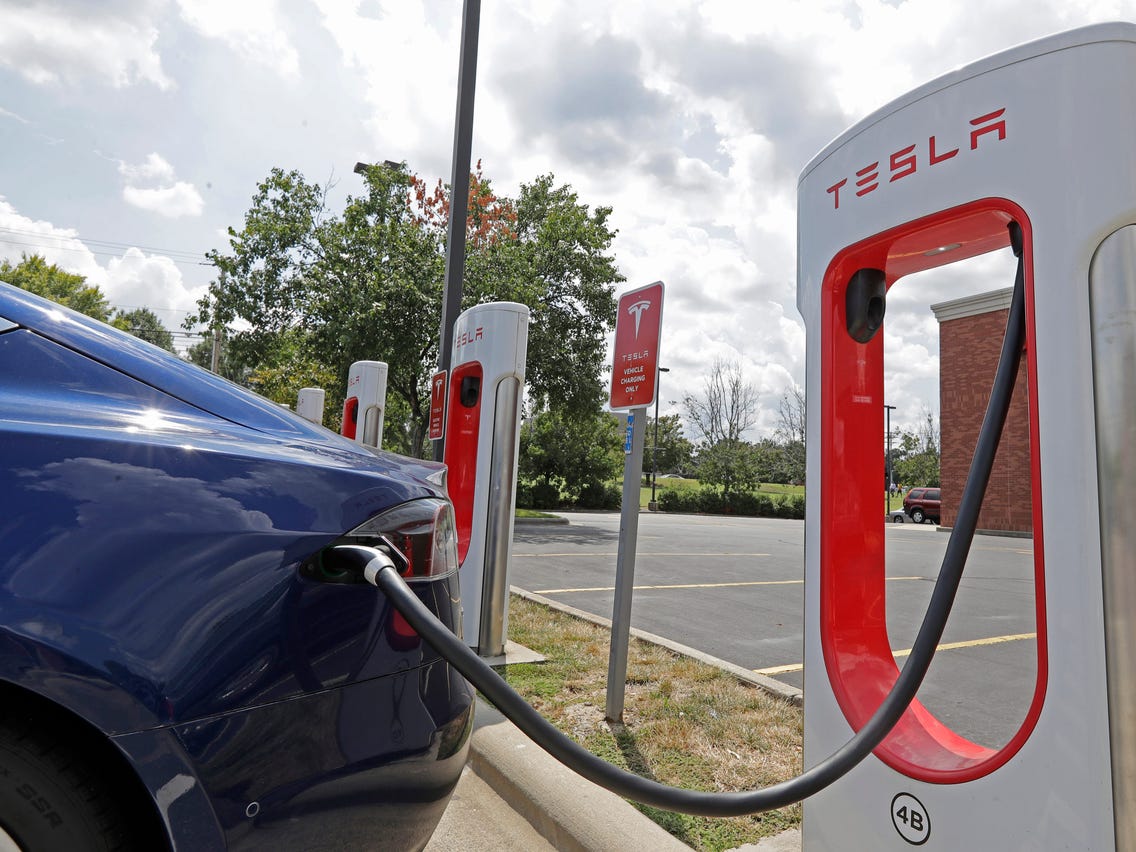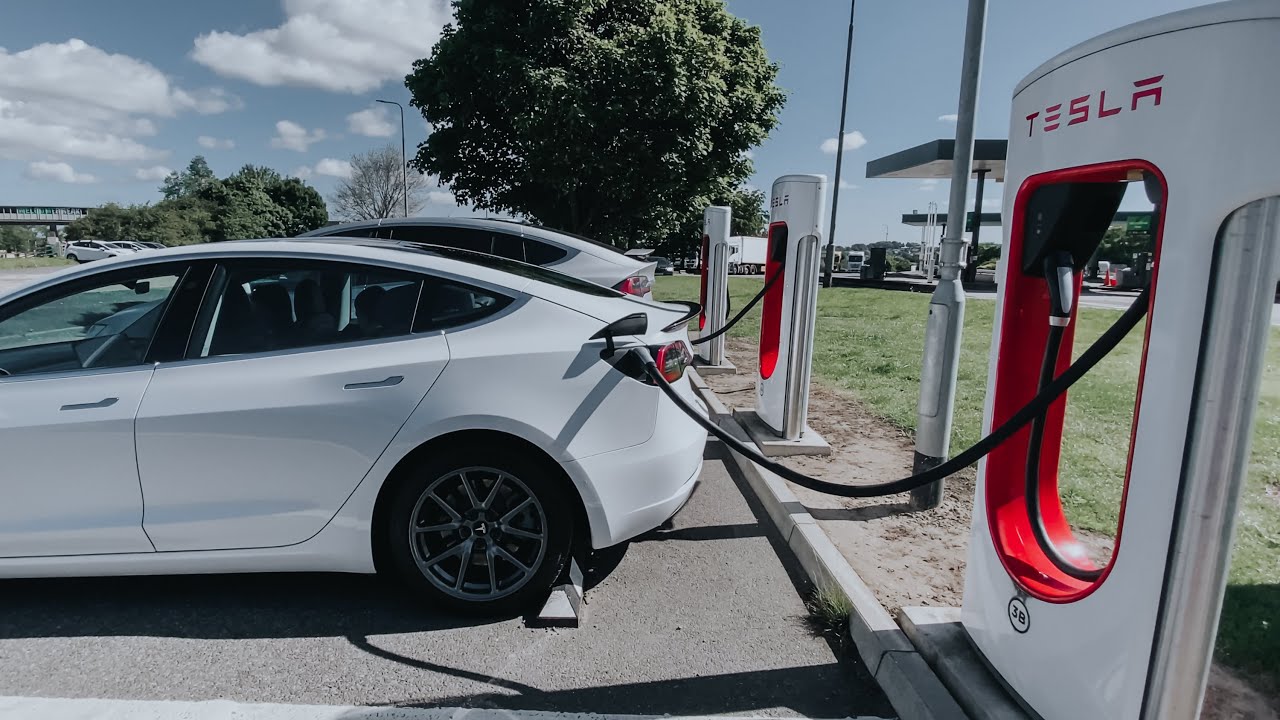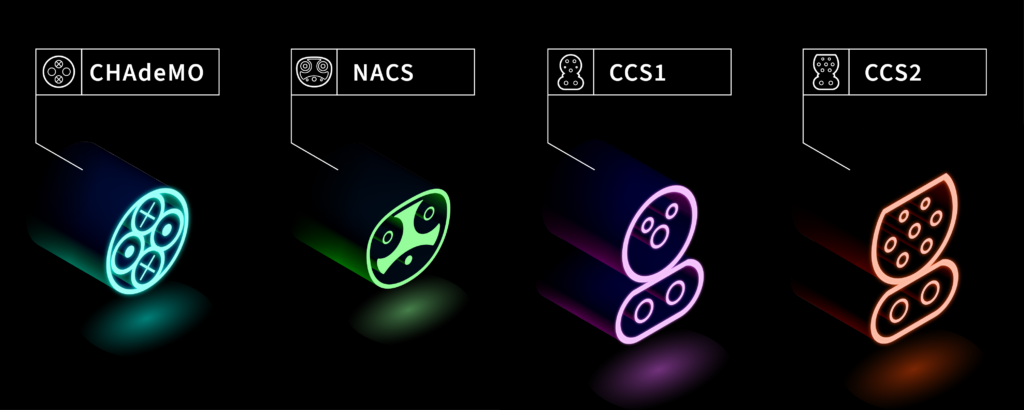What is NACS Connector for Tesla supercharging Station?
In June 2023, Ford and GM announced they’d be switching from the Combined Charging System (CCS) to Tesla’s North American Charging Standard (NACS) connectors for their future EVs. Less than a month later Mercedes-Benz, Polestar, Rivian, and Volvo also announced they’d support the NACS standard for their US vehicles in the coming years. The switch to NACS from CCS seems to have complicated the electric vehicle (EV) charging landscape, but it’s a great opportunity for charger manufacturers and charge point operators (CPOs). With NACS, CPOs will be able to charge more than 1.3 million Tesla EVs on the road in the US.
What is NACS?
NACS is Tesla’s previously proprietary direct current (DC) fast charging connector standard—formerly known simply as the “Tesla charging connector.” It has been used with Tesla cars since 2012 and the connector design became available to other manufacturers in 2022. It was designed for Tesla’s 400-volt battery architecture and is much smaller than other DC fast charging connectors. The NACS connector is used with Tesla superchargers, which currently charge at a rate of up to 250kW.
What is the Tesla Magic Dock?
The Magic Dock is Tesla’s charger-side NACS to CCS1 adapter. About 10 percent of Tesla chargers in the US are equipped with Magic Dock, which lets users select a CCS1 adapter when charging. EV drivers need to use the Tesla app on their phones to charge their EVs with Tesla chargers, even when using the Magic Dock CCS1 adapter. Here’s a video of the Magic Dock in action.
What is CCS1/2?
The CCS (Combined Charging System) standard was created in 2011 as a collaboration between U.S. and German automakers. The standard is overseen by CharIn, a group of automakers and suppliers. CCS contains both alternating current (AC) and DC connectors. GM was the first auto manufacturer to use CCS on a production vehicle—the 2014 Chevy Spark. In America, the CCS connector is usually referred to as “CCS1.”
CCS2 was also created by CharIn, but is used primarily in Europe. It’s a larger size and shape than CCS1 to accommodate Europe’s three-phase AC power grid. Three-phase AC power grids carry more power than the single-phase grids common in the U.S., but they use three or four wires instead of two.
Both CCS1 and CCS2 are designed to work with ultrafast 800v battery architectures and charging speeds up to and beyond 350kW.
What about CHAdeMO?
CHAdeMO is another charging standard, developed in 2010 by the CHAdeMo Association, a collaboration between the Tokyo Electric Power Company and five major Japanese automakers. The name is an abbreviation of “CHArge de MOve” (which the organization translates as “charge for moving”) and is derived from the Japanese phrase “o CHA deMO ikaga desuka,” which translates to “How about a cup of tea?” referring to the time it would take to charge a car. CHAdeMO is typically limited to 50kW, however some charging systems are capable of 125kW.
The Nissan Leaf is the most common CHAdeMO-equipped EV in the US. However, in 2020, Nissan announced it would move to CCS for its new Ariya crossover SUV and would discontinue the Leaf sometime around 2026. There are still tens of thousands of Leaf EVs on the road and many DC fast chargers will still retain CHAdeMO connectors.
What does it all mean?
Auto manufacturers choosing NACS will have a big impact on the EV charging industry in the short term. According to the US Department of Energy Alternative Fuels Data Center, there are approximately 1,800 Tesla charging sites in the US compared to around 5,200 CCS1 charging sites. But there are approximately 20,000 individual Tesla charging ports compared to about 10,000 CCS1 ports.
If charge point operators want to offer charging for new Ford and GM EVs, they’ll need to convert some of their CCS1 charger connectors to NACS. DC fast chargers like Tritium’s PKM150 will be able to accommodate NACS connectors in the near future.
Some US states, like Texas and Washington, have proposed requiring National Electric Vehicle Infrastructure (NEVI)-funded charging stations to include multiple NACS connectors. Our NEVI-compliant fast charging system can accommodate NACS connectors. It features four PKM150 chargers, capable of delivering 150kW to four EVs simultaneously. In the near future, it’ll be possible to equip each one of our PKM150 chargers with one CCS1 connector and one NACS connector.
To learn more about our chargers and how they can work with NACS connectors, contact one of our experts today.
The NACS Opportunity
If charge point operators want to offer charging for many future Ford, GM, Mercedes-Benz, Polestar, Rivian, Volvo, and possibly other EVs equipped with NACS connectors, they’ll need to update their existing chargers. Depending on charger configuration, adding a NACS connector could be as simple as replacing a cable and updating charger software. And if they add NACS, they’ll be able to charge approximately 1.3 million Tesla EVs on the road.
Post time: Nov-13-2023

 Portable EV Charger
Portable EV Charger Home EV Wallbox
Home EV Wallbox DC Charger Station
DC Charger Station EV Charging Module
EV Charging Module NACS&CCS1&CCS2
NACS&CCS1&CCS2 EV Accessories
EV Accessories



